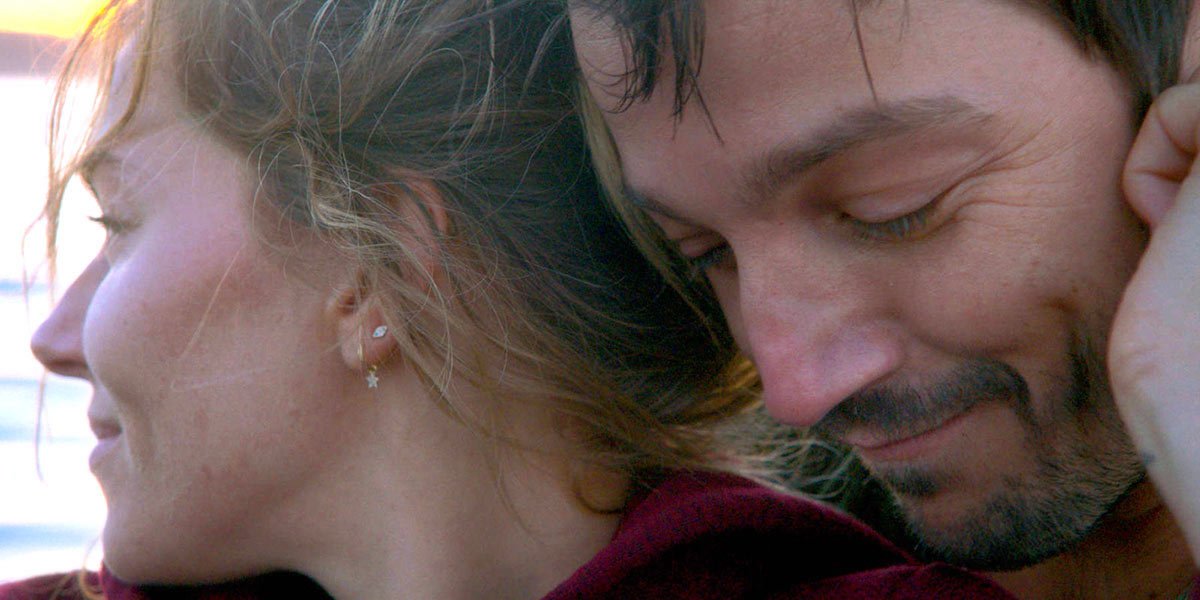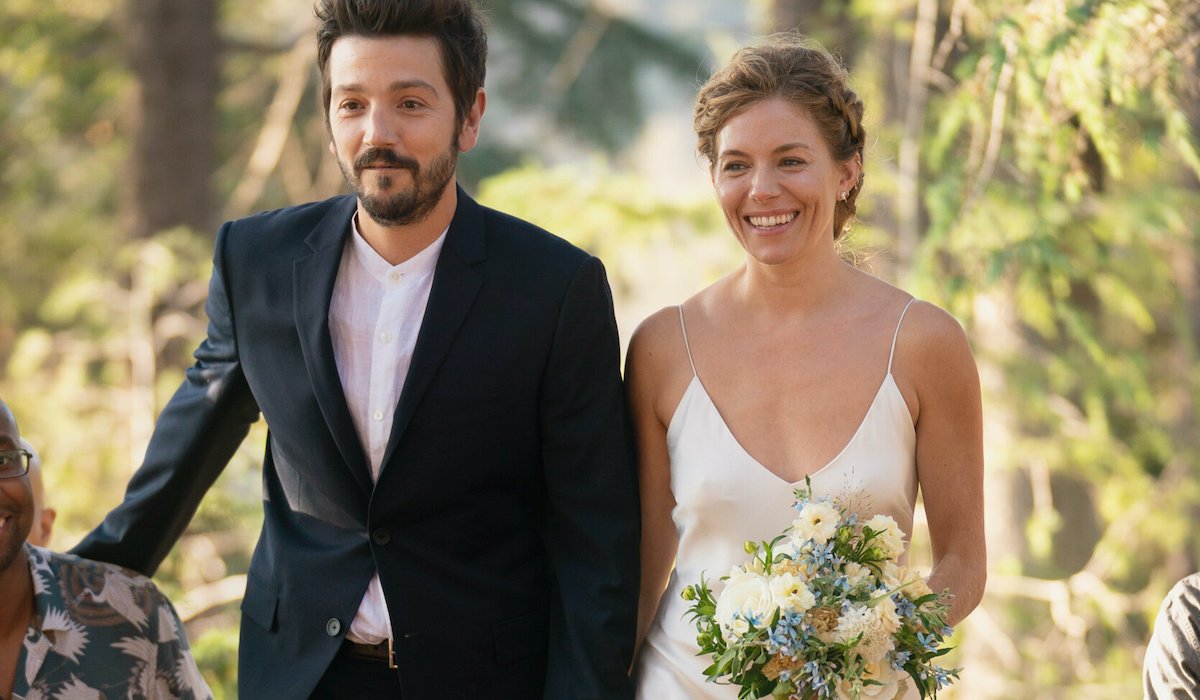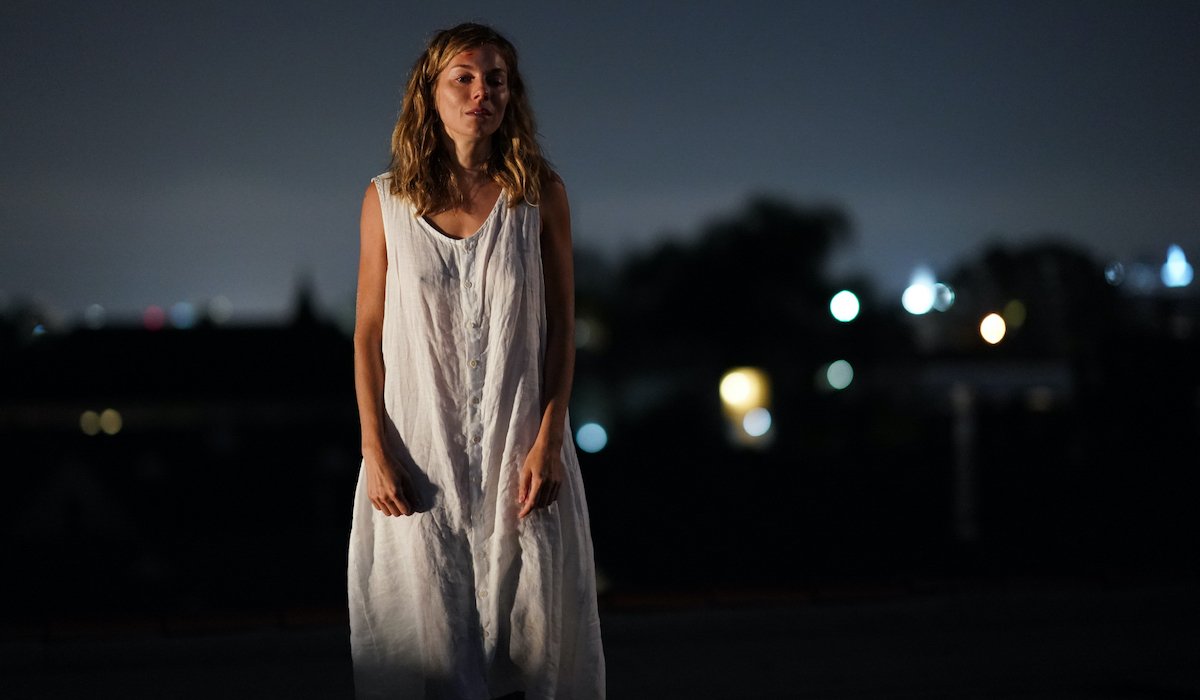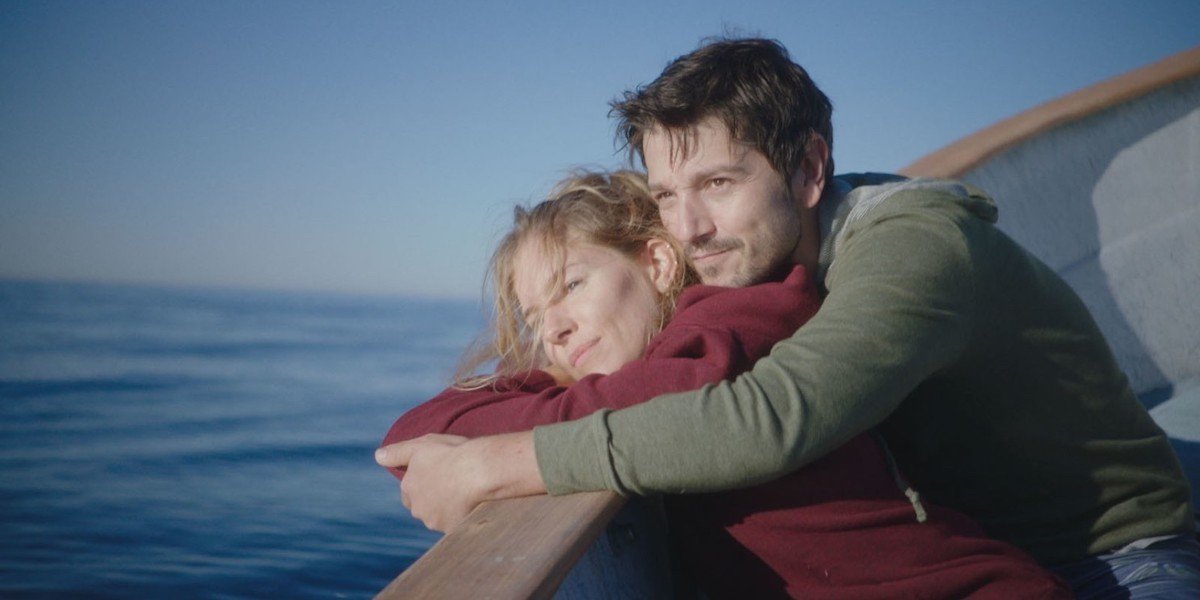Wander Darkly Ending Explained: What Really Happens And What It Means

One of the most subtly powerful movies of the year is Wander Darkly starring Sienna Miller and Rogue One’s Diego Luna. The romantic drama that infuses time-bending elements that may remind one of a Charlie Kaufman film like Eternal Sunshine of the Spotless Mind or the interweaving of reality, memory and fantasy Christopher Nolan is known and loved for. Though, when it comes to the Wander Darkly ending, the storytelling and stakes feel a lot more sobering and real than its more sci-fi cousins have to offer.
Before we get into the specifics of the ending of Wander Darkly, I do want to say that I believe this movie is best experienced without an outside viewpoint telling you what it’s about and what to look for. If you have yet to see it, I highly recommend you stop reading now, and let the movie just fill you with blind eyes, as it should, and return once you have. Wander Darkly is also a movie that I believe each person may get different things out of. I’ve heard this movie being described as a poem, and it certainly has that effect. Now that you’ve been warned about spoilers, let’s discuss what really happened in Wander Darkly.

What Happened At The End Of Wander Darkly?
Wander Darkly begins with a car crash that Sienna Miller and Diego Luna’s Adrienne and Mateo get into by accident while in an argument about the state of their relationship. Adrienne then wakes up covered in blood, standing in a hospital and watching herself being placed in a body bag and pronounced dead. In a state of terror, Adrienne thinks she is a ghost watching herself attend her own funeral, where Matteo speaks until she finds him speaking directly to her at a freeway overpass. She is about to kill herself when he convinces her they are both here and alive. The story then takes this couple down memory lane, Diego Luna’s character leading Miller down segments of their relationship that leads to the present day after the car accident.
As the audience, we are living the story through Adrienne’s eyes specifically, who is an unreliable narrator because she has just been through an incredible trauma. At different points of the film, we find ourselves wondering if she really is in purgatory, if they are both dead or both alive and well. As we learn at the very end of Wander Darkly, Adrienne was alive the entire time and the dead body she stood over in the hospital was Matteo. She saw herself there, but Wander Darkly was about Adrienne grieving and coming to terms with the death of the father of her child, love of her life and husband. Once she makes the realization with her family by her side, the movie officially ends with her taking her daughter to his funeral and spreading his ashes in the ocean, at the same place where they vacationed together once.

What The Ending Means To The Rest Of Wander Darkly
Once you experience the ending of Wander Darkly, the feeling is to immediately venture back to the beginning to understand how the movie could have possibly been about the death of Matteo the entire time instead of Adrienne. With my own return to the movie after my first watch, I noticed there’s this really clever thing the filmmakers do that you might not catch on first viewing.
When Adrienne walks outside and ends up in her funeral, it looks like the scene splices are just camera shifts, but the editing is weaving her memories in a completely non-linear fashion. At first we think she walks out of her house, dead without her daughter Elle being able to see her as a ghost into her funeral, but she moved from one memory to the next. We learn later in the film that the funeral we witness is for the mother of Matteo before their car accident and she is reliving memories associated with death in order to understand the concept of experiencing it so viscerally with her partner’s death.
Some blatant clues that show that much of Wander Darkly is a flood of memories and processing of the past, can be shown through these moments where the couple is talking to each other with awareness in retrospect of what happened, oftentimes having conversations with each other about how things played out, what they thought about it then and now. Studies show that when people suffer intense trauma as theirs, they tend to dissociate and detach from the circumstances in order to cope before they can process it. According to Healthline, there’s usually a phase of denial, which really encapsulates the journey that Adrienne goes on, thinking she's the one who died.
Your Daily Blend of Entertainment News

How Wander Darkly May Illustrate Grief And Depression
To expand on that, there’s a few really interesting ways one could dissect the ending for Wander Darkly. I think you could situate it as a movie that’s taking audiences on a trip through the stages of grief (denial, anger, bargaining, depression, acceptance), but within that context on another layer, the movie also tackles depression specifically in a really brilliant way. There is a clue that Wander Darkly is tackling these themes because the moment she “wakes up” after their time in the hospital there is a woman on a television saying the following:
I remember one minute being in this world, and the next minute being like ‘I died.’
This could very well be a signal that Wander Darkly is about Complicated Grief (CG), a condition that happens after the death of a loved one that often features problems accepting death, feelings of depression and “inability to enjoy life or think back on positive experiences with your loved one,” per Mayo Clinic. There’s some especially poignant moments within the second to third act of Wander Darkly that have Adrienne reliving memories with Matteo but through the lens of seeing herself die and pondering things like her funeral or how she will die. Real deep stuff. It’s really well done especially because when someone has depression they could be in any moment, even a happy one and be exploring the idea of sadness and mortality. Considering almost the entirety of Wander Darkly takes place in the past, it’s secretly an inspired way to show how these kinds of conditions associated with loss and trauma can feel to a person.
How did you like the ending of Wander Darkly? Vote in our poll below and check out the CinemaBlend’s 10 best under-the-radar films of 2020.
This poll is no longer available.

Sarah El-Mahmoud has been with CinemaBlend since 2018 after graduating from Cal State Fullerton with a degree in Journalism. In college, she was the Managing Editor of the award-winning college paper, The Daily Titan, where she specialized in writing/editing long-form features, profiles and arts & entertainment coverage, including her first run-in with movie reporting, with a phone interview with Guillermo del Toro for Best Picture winner, The Shape of Water. Now she's into covering YA television and movies, and plenty of horror. Word webslinger. All her writing should be read in Sarah Connor’s Terminator 2 voice over.


